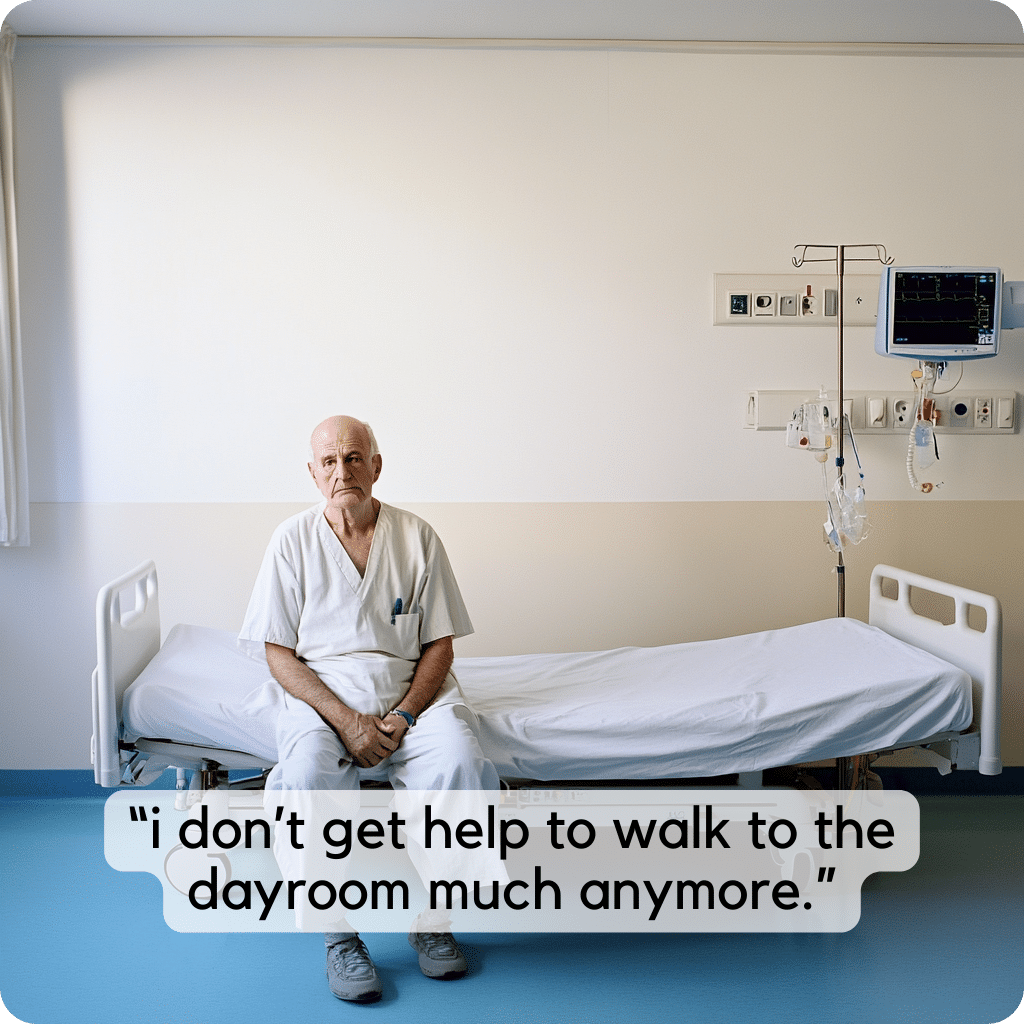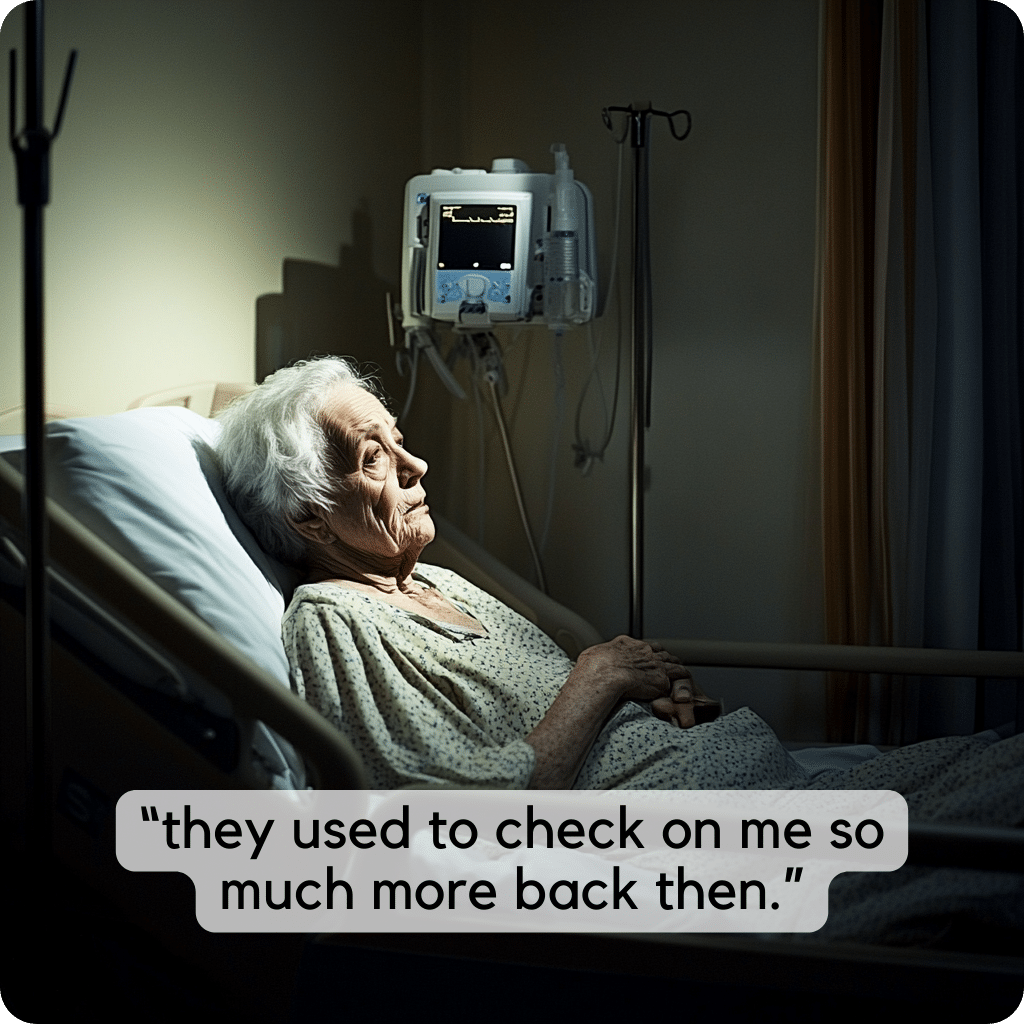Unbalanced nurse to patient ratios can kill! Patient outcomes can suffer. Facility efficiencies are downgraded.
There is no doubt, that in 2025, nurse staffing ratios are, or should be, a big focus in the healthcare staffing segment of healthcare. Bureaucracy and budgets have created a delicate, but sometimes dangerous dance, that can sometimes leave healthcare facilities on the wrong side of liability. The bottom line is, nurse staffing ratios matter for patient care, and play a critical role in supporting full time healthcare staffing in facilities.
When I asked contract labor professionals about their experiences with nurse-to-patient ratios they sort of cringed. Not because it was bad, but because staffing approaches currently are so varied across the healthcare facilities that they’re exposed to on a day to day basis.
They say that having enough healthcare professionals on staff was key to maintaining nurse to patient ratios and quality patient outcomes, but that goal is not always accomplished. Sometimes to the detriment of the healthcare facilities financial well being.
When you speak to healthcare professionals that directly interface with patients, you will typically get different answers about nurse staffing ratios and how they affect the nurse to patient ratios in facilities. Healthcare facilities will give you an altogether different answer, that mostly orients around funding, and budgets not being there to meet those nurse to patient ratios. PRN nurse staffing is a long established practice to offset full time staff, reduce healthcare staffing overtime costs, and increase patient outcomes.

The State of Nurse Staffing Ratios in Modern Healthcare
Understanding and adhering nurse staffing ratios is crucial for healthcare facilities, yet they fall to the wayside so many times. What causes this?
Have you ever been in a healthcare facility or hospital and saw nurses or other professionals running room to room? That’s not because they love to do cardio. It’s because traditional staffing ratio practices for healthcare professionals aren’t cutting it anymore.
The healthcare landscape has changed dramatically over the last few decades as healthcare in general becomes more complicated and burdened by bureaucracy and regulations. Patient needs are more complex, nursing shortages are hitting hard and the old “fixed staffing” model is showing its cracks.
Government bureaucracy is also breathing down the necks of many classifications of healthcare facilities. Modern facilities need something more flexible, more responsive and more human.
PRN nurse staffing is the answer to supplementing these staffing ratios. It always has been.
Why Nurse to Patient Ratios Matter
Nurse to patient ratios are a critical part of healthcare as they directly impact patient safety and outcomes. Research has consistently shown that lower nurse to patient ratios are associated with better patient outcomes including reduced mortality rates, fewer medication errors and improved patient satisfaction. Higher nurse to patient ratios can lead to increased risk of patient harm including healthcare acquired infections, falls and pressure ulcers.
The emergency department is one of the units where proper nurse to patient ratios are essential for patient safety and outcomes. You can’t stress enough how important nurse to patient ratios are. Nurses are the providers of high quality care to patients and their workload directly impacts patient outcomes.
When nurses are assigned too many patients they may not be able to provide the level of care each patient needs and adverse events and poor outcomes can occur. When nurses have a manageable workload they can provide individualized care, respond to patient needs and prevent complications.

What is Nurse To Patient Ratio Staffing
Effective nurse staffing involves considering many factors including patient acuity, nurse expertise and facility policies. It requires an understanding of the complex relationships between nurse staffing levels, patient outcomes and facility operations, particularly budget thresholds.
Nurse staffing levels can vary greatly depending on the hospital unit, facility, patient population and time of day. For example critical care units require higher nurse to patient ratios due to the high acuity of patients, while medical-surgical units may require lower ratios.
Nurse staffing levels can also fluctuate due to factors such as nurse turnover, absenteeism and changes in patient census. These days, there are more things that cause facilities to lean towards those dangerous nurse to patient ratios, than there are that help support the healthy ratios.
The Obvious Benefits of PRN Staffing
PRN (per diem) staffing has become a game-changer for healthcare facilities struggling with immediate staffing challenges. Imagine having a pool of skilled nurses ready to step in at a moment’s notice. That’s the magic of PRN staffing. It offers a level of flexibility traditional staffing models can’t match.
One of the biggest benefits of PRN staffing is its flexibility. Healthcare facilities can schedule PRN nurses on short notice to respond to fluctuations in patient census or unexpected staffing shortages. This allows patient care to continue uninterrupted even during peak times or emergencies.
Cost effectiveness is another big advantage. Unlike traditional staffing models where facilities and hospitals have to budget for full time salaries and benefits, a contract labor nursing workforce allows facilities to pay only for the hours worked. This can result in big savings especially during low volume periods.
But it’s not just about the numbers. PRN nurses are experienced professionals with a wealth of knowledge and specialized skills. They have just chosen to exercise their skillsets in a different way. In 2025 and beyond, freedom is a big thing for many of these professionals.
Their ability to provide high quality care is a testament to their expertise. By integrating PRN nurses into their teams, these facilities can maintain high standards of care without burdening their full time staff. In the end it’s all about patient outcomes.
With the right staffing levels patients get the attention and care they need and the risk of adverse events goes down and overall satisfaction goes up. PRN staffing isn’t a Band-Aid solution, it’s a strategic approach to patient care and outcomes.

How Nurse Staffing Ratios Impact Patient Outcomes
In many cases, PRN nursing supports and balances a facilities workforce, ensuring that the liability shouldered by those facilities is greatly reduced, and the on site staff is much happier. This is due to those professionals having to work less overtime, and a multitude of other advantages.
These experiences show why nurse staffing ratios should be a priority in every healthcare setting.
- 14% lower mortality rates with optimized PRN-to-patient ratios
- Patients heal 20% faster with proper staffing
- 25% fewer readmissions with strategic coverage
- 40% less burnout rates for nurses
- 35% higher patient satisfaction scores
A core staffing plan is key to achieving optimized nurse staffing ratios as it ensures safe staffing through collaboration between nurses and hospital leaders. How are some healthcare facilities nurse to patient ratios so far off that it would be obvious that the patients are not getting the care they deserve, for the services that are being paid for? This is actually quite troubling.
By deploying PRN staffing solutions, it allows you to respond to patient care needs quickly, and ensure quality outcomes. PRN staff can also really help to lower your staff nurse/professional burnout, and churn rates. This is accomplished by allowing the facility to reduce healthcare facility overtime costs by saving significantly on less overtime each month.
In the end nurse staffing ratios balance patient care with staffing efficiency.
But here’s what really matters: Behind every statistic is a story. Like the night shift nurse who finally had time to notice her patient’s subtle neurological changes. Or the charge nurse who stopped dreading the morning staff assignment process.
Safe Nurse Staffing Ratios in Action
Safe staffing ratios are critical for patient safety and preventing adverse events. There is no one-size-fits-all solution to safe staffing ratios but research has identified general guidelines for different hospital units. For example the American Nurses Association recommends the following staffing ratios:
- Medical-surgical units: 1:4-1:6
- Critical care units: 1:2-1:3
- Emergency departments: 1:2-1:4
- Operating rooms: 1:1-1:2
Implementing safe staffing ratios requires a collaborative effort between hospital administrators, nurse leaders and frontline nurses. Hospitals and facilities must consider many factors including patient acuity, nurse expertise and hospital policies when determining staffing ratios. Regular monitoring and evaluation of staffing ratios is also key to ensure they are working to promote patient safety and prevent adverse events.

The Science Behind Nurse To Patient Ratio Management
St. Mary’s proved that by optimizing nurse staffing ratios with PRN nurse staffing, they dramatically improved their outcomes. Think of PRN staffing like your favorite streaming service – you only pay for what you actually use. More nurses during flu season? Done. Quieter in summer? Scale back. It’s that simple.
But there’s science behind it:
Predictive Analytics: Modern staffing solutions use historical data to predict busy periods Skills Matching: Ensuring specialized nurses are available when needed Cost Optimization: Balancing coverage with budget realities Quality Metrics: Continuous monitoring of patient outcomes
National Nurses United (NNU), the largest nurses union, provides data and guidelines for effective nurse-to-patient staffing ratios. They offer specific ratios based on specialty and back it up with data from successful implementation of mandatory guidelines.
Real World Nurse Staffing Success Stories
St. Mary’s optimized their outcomes with PRN nurse staffing solutions:
- Patient satisfaction went from 65% to 87%
- Nurse retention skyrocketed
- Quality metrics improved across the board
“It’s like we’re working in a different hospital,” says Dr. Lisa Nguyen, their CEO. “Our PRN staffing strategy changed everything.”
But St. Mary’s isn’t alone. Memorial Health in Denver also saw:
- 30% reduction in patient wait times
- 45% improvement in staff satisfaction
- 22% decrease in per-patient costs

Advanced Nurse Staffing Tools
Healthcare technology in the staffing segment is advancing rapidly. NurseIO can actually manage prn nurse staffing with AI and advanced health tech features to reduce healthcare facilities cost and save their professionals time.
It’s like having a full time staffing machine at your fingertips. Pay when you use the service. Don’t pay when you don’t have a need for it.
The key is to be set up and ready for those all too familiar emergencies that ALWAYS come up.
Maintaining optimal nurse to patient ratio using advanced tools is key to safe staffing and quality care.
And you will save an enormous amount of time and costs by augmenting your ever flexing scheduling with PRN, vs. having to pay overtime to full time staff. It’s a win-win all the way around.
These platforms offer:
- Real-time staffing analytics
- Automated scheduling optimization
- Skills and certification tracking
- Budget forecasting
- Integration with EMR systems
Common Nurse Staffing Challenges (And How to Solve Them)
Let’s get real – change isn’t easy. Here are the hurdles most facilities face:
- Staff Resistance Solution: Start with small pilot programs and gather feedback early and often.
- Technology Integration Solution: Choose platforms that work with your existing systems and offer good training support.
- Budget Concerns Solution: Start with high-impact departments and track ROI closely.
- Communication Gaps Solution: Implement clear protocols for shift changes and assignment updates.
Addressing nurse to patient staffing ratios is critical.
Laws and regulations in various states aim to ensure patient safety and optimal nurse staffing ratios which impacts patient outcomes and nurses’ workloads.

Nurse Staffing Blueprint: Your Step-by-Step Guide. So you want to optimize your ratios?
-
Start Small
- Pick one department to start with
- Define success metrics
- Collect baseline data
- Train staff thoroughly
Proper staffing ratios ensures adequate nursing care which in turn maintains quality of nursing care and patient care.
In the future, PRN nurse staffing will be a part of daily operations. It already is, it’s just sort of not loved as it can be.
-
Choose Strategic Partners – Look for partners who:
- Know proper patient ratios
- Have experienced nurses
- Offer flexible coverage
- 24/7 support
- Match your facility’s culture
-
Monitor Impact:
- Patient satisfaction metrics
- Staff feedback on integration
- Quality of care indicators
- Financial impact
- Staff retention rates

The Bottom Line
Let’s get to the numbers. A 200-bed hospital that optimizes staffing ratios sees significant benefits for both financial performance and quality of care. By having right nurse-to-patient ratios and nursing staff in hospital-based staffing committees, hospitals can achieve:
Nurses must embrace PRN nurse staffing to innovate patient care. You cannot do it on your own. PRN staffing solutions serve a critical need in the patient care arena. It always has. It always will.
Advocating for healthy nurse to patient ratios can change the face of healthcare.
Our understanding of prn nurse staffing is key to a more responsive healthcare system.
- $800,000 annual reduction in staffing costs
- 15% reduction in patient length of stay
- 40% reduction in staff turnover costs
- 25% fewer patient safety incidents
What’s Next in Healthcare Staffing
It’s changing.
Watch for:
- AI-driven scheduling
- More work-life balance
- Remote nursing roles
- Flexible shifts
- Preventative staffing strategies
The role of the healthcare professional going forward will also be crucial in shaping future staffing trends, especially with nurse-to-patient ratios and working conditions.

Next Steps
Healthcare’s messy. It’s complicated. But strategic staffing via prn nurse staffing is working for modern facilities.
Want to see if optimized ratios could work for you? Book a demo with NurseIO and find out how we will save your healthcare facility 25% or more on your staffing–GUARANTEED.
No strings attached – just useful info.
Conclusion
Nurse staffing ratios are the foundation of patient safety and quality care. The national nursing shortage is big but individual states are stepping up with nurse staffing ratio laws to prioritize patient safety. Knowing the pros and cons of different staffing models is key for healthcare facilities to address their staffing needs.
PRN staffing is the solution in this landscape. By addressing immediate staffing needs, PRN staffing ensures patients get the care they need when they need it. This approach improves patient outcomes and reduces the risk of adverse events – a win-win for patients and providers.
As healthcare facilities navigate the nurse staffing puzzle, patient safety and quality care must always come first. By embracing new staffing solutions like PRN staffing and continuously evaluating their staffing strategies, healthcare facilities can create a more responsive healthcare system. The future of staffing is adaptation, innovation and always putting patient care first.
NurseIO is the healthcare staffing solution that you’ll want to love. Ditch the glorified agencies, and jump on board with a end to end solution that saves you enormous amounts of money, and time.
